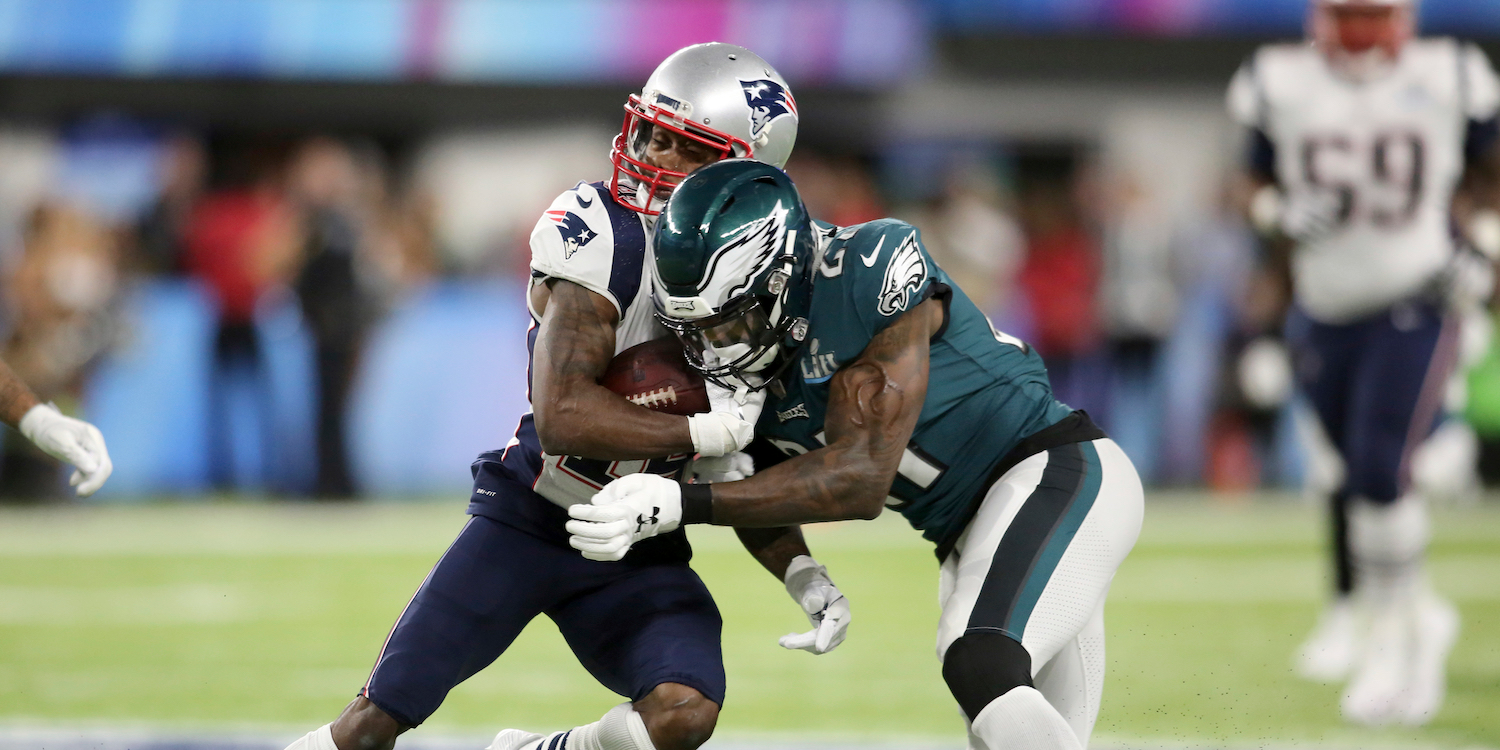- The NFL on Tuesday voted to introduce a new rule penalizing players who lead with their helmets on hits.
- The NFL said head-to-head hits were on the rise in recent seasons and they wanted to make the game safer.
- Some feel that the new rules will only make the game harder to officiate and could result in more flags and penalties.
On Tuesday, NFL owners voted to clarify one of the league’s most confusing rules, while also introducing a new rule that could cause some confusion.
As expected, the league changed its baffling catch rules, allowing movement of the ball in the receiver’s hands, ending the need to control the ball to the ground, and making it more difficult for officials to overturn catches.
However, they also introduced a new rule to eliminate head-to-head hits, which the NFL said have been on the rise in recent years.
The new rule states that if a player lowers his helmet to initiate contact on a hit, it can be a 15-yard penalty. According to reports, the league will discuss the possibility of ejections in certain cases.
Rich McKay, the chairman of the Competition Committee, said on Thursday that the NFL hopes the change will inspire safer technique and will extend down to lower levels of football. The league will reportedly have a meeting with players and coaches to work through the new rule and teach techniques.
According to NFL research, nearly one out of every two helmet-t0-helmet hits resulted in a concussion.
While the goals of the rule are admirable, many in the NFL world feel it will only result in more penalties, flags, ejections, and confusion.
Targeting rule in NFL is going to be total disaster to officiate.
— mike freeman (@mikefreemanNFL) March 27, 2018
Interesting to see how often targeting is called on a runner lowering his head. That happens majority of plays.
— Kent Somers (@kentsomers) March 27, 2018
Text from former NFL linebacker: “Can't believe how ridiculous this lowering of the head thing is. Go back and watch any game and you will see probably 30 to 50 examples of guys lowering their head on contact. A f——— mess. Why does the NFL want to self-destruct?”
— Adam Schefter (@AdamSchefter) March 28, 2018
How strict is the NFL going to be on this new rule? On this Tom Brady quarterback sneak, he lowers his head and makes contact with the hand of the defensive lineman. Is that now a penalty? If so the sport of football has just changed dramatically. pic.twitter.com/qWxuK5yEAH
— Michael David Smith (@MichaelDavSmith) March 27, 2018
Can't wait to see defensive players get ejected when they go for a legal tackle and the offensive player they're trying to tackle moves abruptly into helmet range. Why does the NFL insist on forcing officials to legislate intent on bang-bang plays? https://t.co/uuZ5Lb8MpP
— Doug Farrar ✍ (@NFL_DougFarrar) March 27, 2018
The NFL noted that the infamous Ryan Shazier hit from last year would now be illegal because he led with his head. That play went unpenalized last season.
As some writers noted, the rule could be difficult to officiate for two reasons: Players with the ball may brace themselves for tackles by lowering their heads to protect the ball and their bodies. Additionally, some players expecting a tackle could contort their position to draw contact with a defender's head, thus drawing a penalty. Of course, in the latter case, a player may also not want to put himself at risk of a head-to-head hit. The NFL could be banking on players caring more for their safety than for drawing a penalty.
While the NFL's ambitions for the new rule may have been well-placed, they may have just created a new headache for officials and fans.
Between the new "targeting" rule and new catch rule, the NFL in 2018 could have more flags, more fumbles and more instant replay. Woot woot!
— Ben Volin (@BenVolin) March 27, 2018

